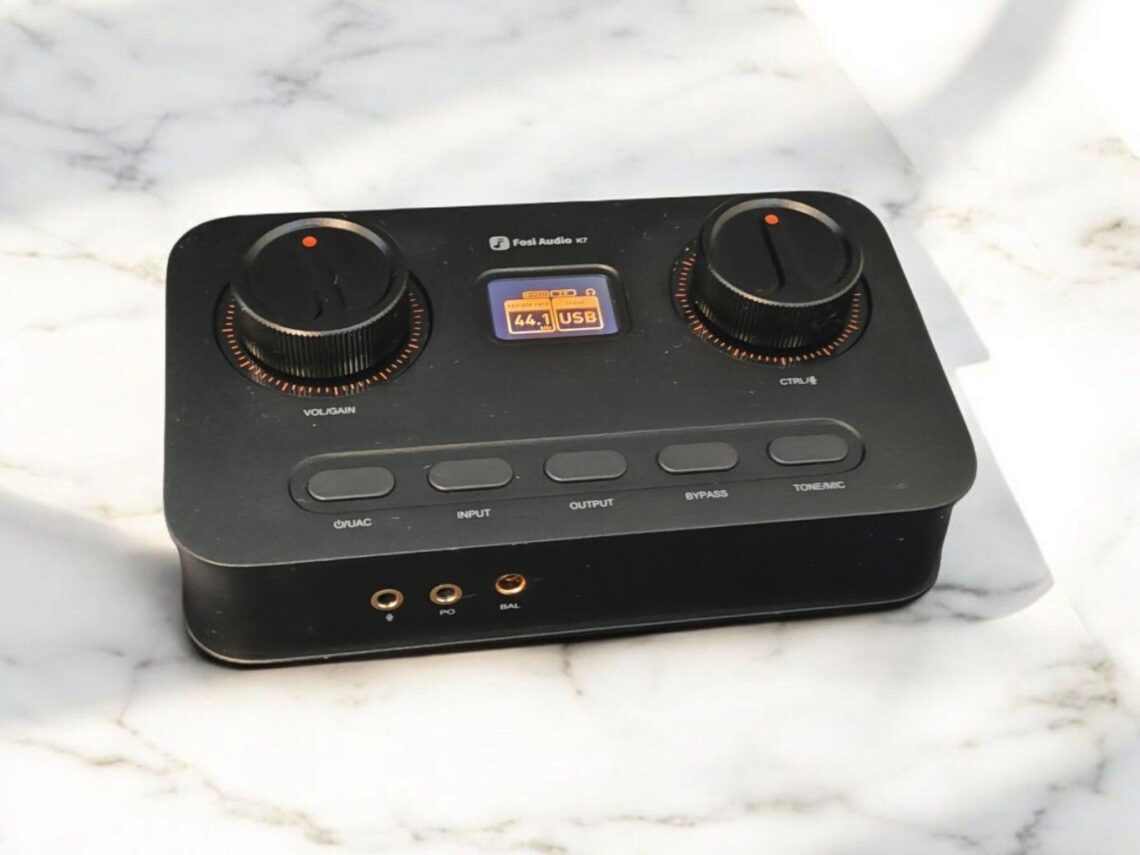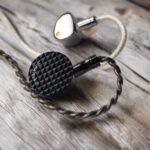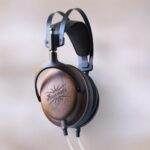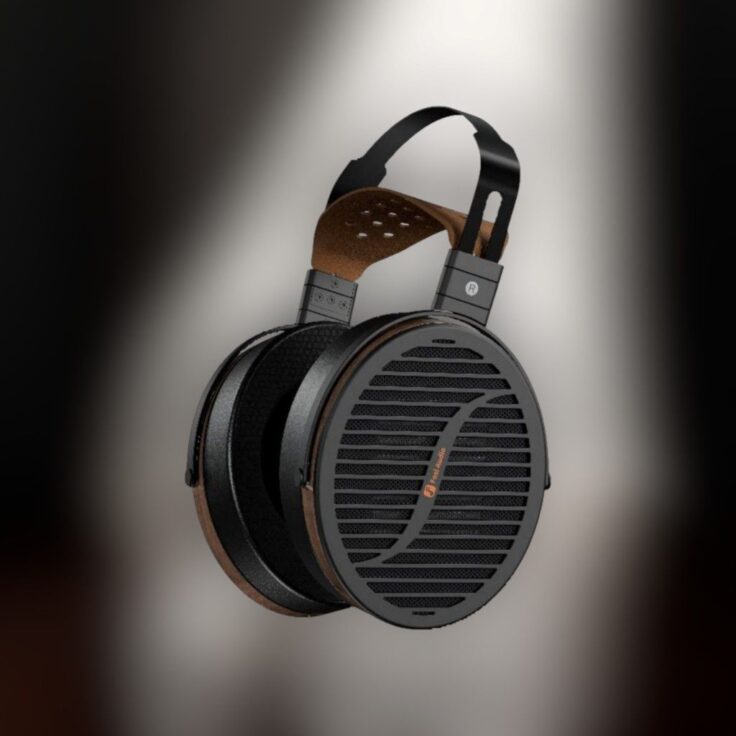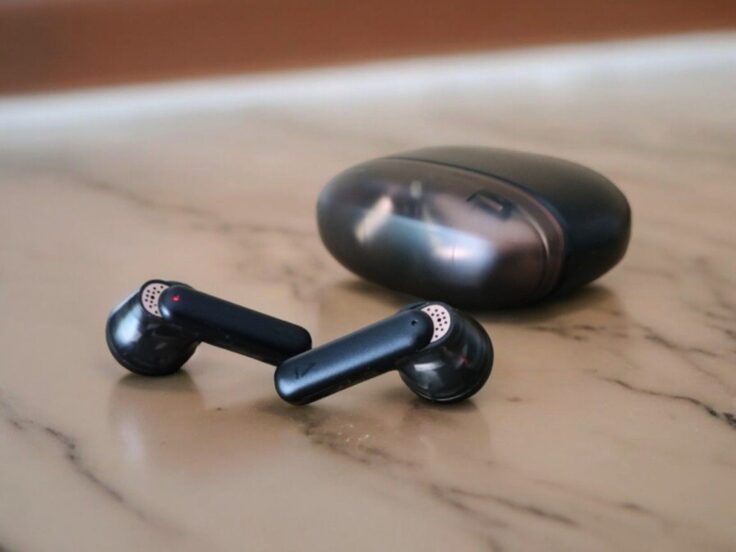The K7 is a new product from Fosi primarily designed to be used with a computer in a desktop environment. It supposedly will cost around 180 USD but can at the time of writing be had for somewhat less via their Kickstarter campaign.
MAIN TAKEAWAY
- Well built, good size and weight for desktop purposes
- Clean and powerful sound
- Multiple digital inputs
- Tone controls for bass and treble
- Screen – informative but small
- 3.5mm and 4.4mm headphone outputs
- No 6.35mm studio standard headphone output
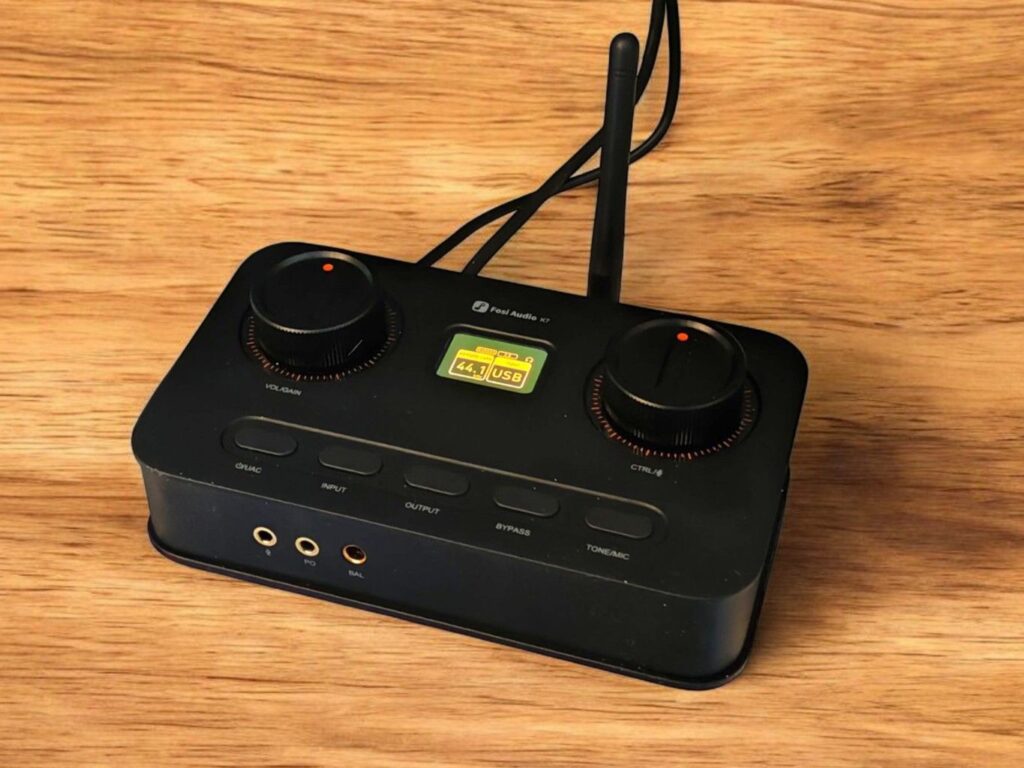
FOSI K7 KEY SPECIFICATIONS
- Inputs: USB-C, Bluetooth, Coax, Optical, Microphone (3.5mm)
- Outputs: Headphone 3.5mm and 4.4mm headphone connectors, RCA preamp
- Bluetooth 5.0 supporting SBC, AAC, aptX, aptX HD, aptX LL, Max signal reach: 13m
- Official support for Mac, Linux and Windows 9-11 (UAC 2.0 needs Windows driver), works with Android when tested.
- Headphone output power at 32 ohm: 600 mW (3.5mm output), 2100 mW (4.4mm balanced output)
- Screen: 1.5 inches, monochrome LCD in yellow and black
- Gain: High or Low
- Bass and Treble adjustment
- Power Input: DC 12V 2A – barrel type connector, PSU included.
- Dimensions: ca 15 x 9 x 3.5 cm
- Weight: ca 530 g
Extended specification listed at the end of the article.
BUILD
The K7 is a sturdy unit, weighing 530 grams and measuring 15 cm × 9 cm, with a height of just over 3 cm. Its sloping design makes it a great fit for desktop setups. Built from aluminum, it feels robust and is heavy enough to stay in place on a desk, though it’s not ideal for portable use.
The front features a 1.5-inch yellow-and-black LCD screen, which has an OLED-like appearance. On either side of the screen are two rotary knobs—the left one controls volume, but it’s a digital encoder rather than an analog potentiometer. Below the knobs, there are five buttons with designated functions. These buttons aren’t backlit, so you need to check the screen for feedback.
The K7 is powered by an included 12V power supply and does not support USB power.
INPUTS AND OUTPUTS
BACK PANEL
- Coax SPDIF Input
- Optical Toslink Input
- Analog RCA Out
- USB C (for signal only, doesn’t accept power or charge your phone)
- Power Input
FRONT PANEL
- 3.5mm microphone input
- 3.5mm single-ended headphone output
- 4.4mm balanced headphone output.
To use a 3.5mm 4-pole headphone with a mic, you need to use a Y-splitter (supplied). The 4.4mm is way more powerful than the 3.5mm. It’s only for “balanced” headphone cables that have separate ground for each channel.
INTERNALS
The digital-to-analogue audio conversion is built around the AKM AK4493SEQ DAC chip, while the analogue signal is amplified with the help of the OPA1612 opamp and the widely used and well-proven TPA6120 headphone amplifier circuit. The USB controller chip is an XMOS XU208, and the Bluetooth chip is Qualcomm’s QCC3030, which has Bluetooth 5.0 support.
OPERATION
The operations of the K7 are built around the 1.5-inch small, yet informative monochrome OLED display. It’s the only feedback you get. The knobs go round and round, and the buttons have no indicator lights, but both the knobs and buttons have informative labels. I would like a twice-as-tall display in the next edition because it is pretty tiny. But it works.
You can also control the output and microphone volume, select gain, adjust bass and treble, and switch between different inputs and outputs. Additionally, the K7 allows you to choose between two USB input modes: UAC 1.0 and UAC 2.0 USB Audio Class.
In UAC 1.0 mode, the display simply shows “PCM,” while in UAC 2.0 mode, it displays the sample rate. I tested my Android phone via USB with no issues using a standard USB-C to USB-C data cable in UAC 1.0 mode. For UAC 2.0, I had to use the USB Audio Player Pro app.
On Windows, UAC 1.0 works without a driver as long as sample rates stay away from high-res audio (theoretically below 24-bit/96kHz, Windows’ native limit). However, to play high-resolution files, a driver is required. As normal, Mac and Linux users don’t need a driver.
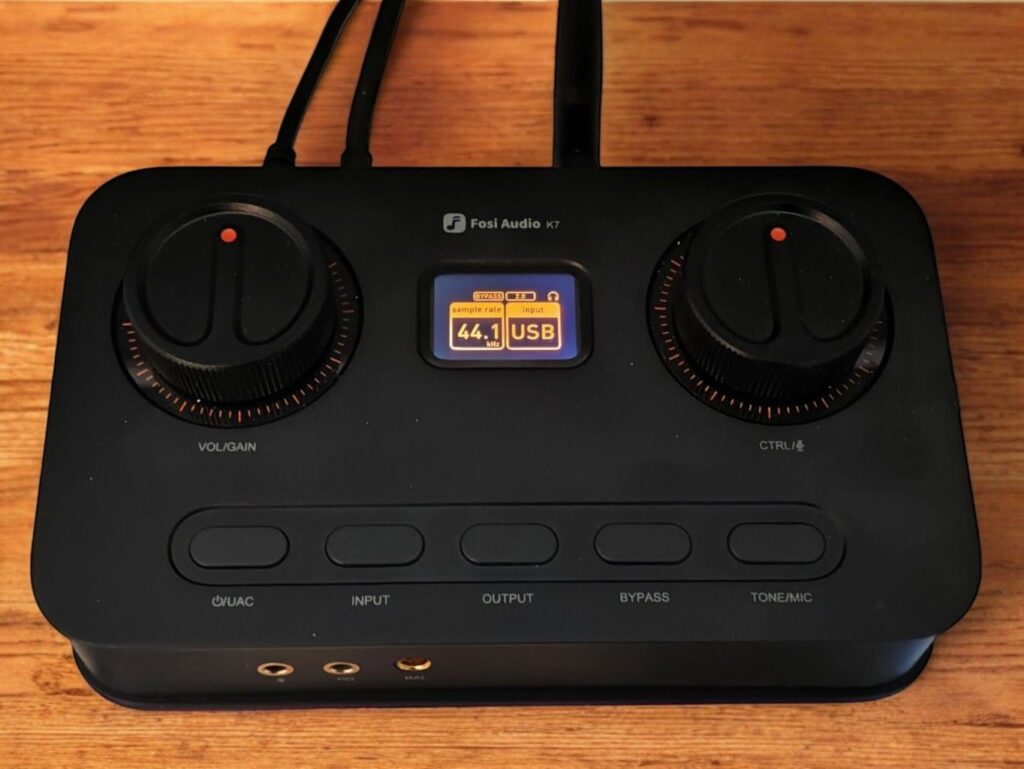
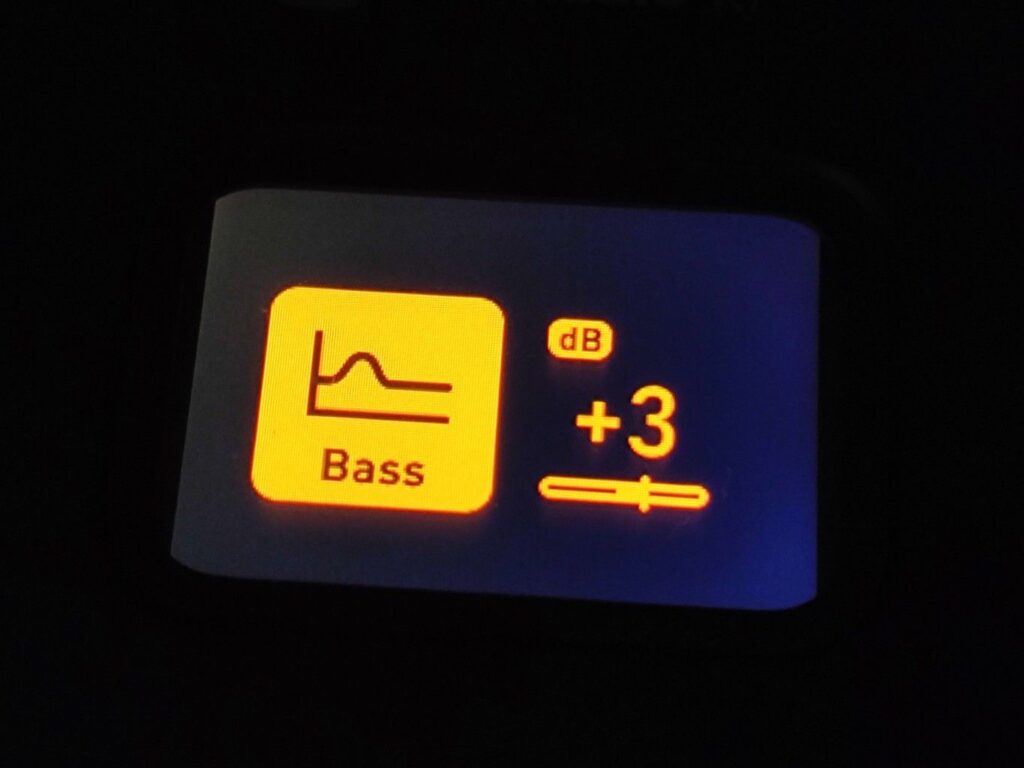
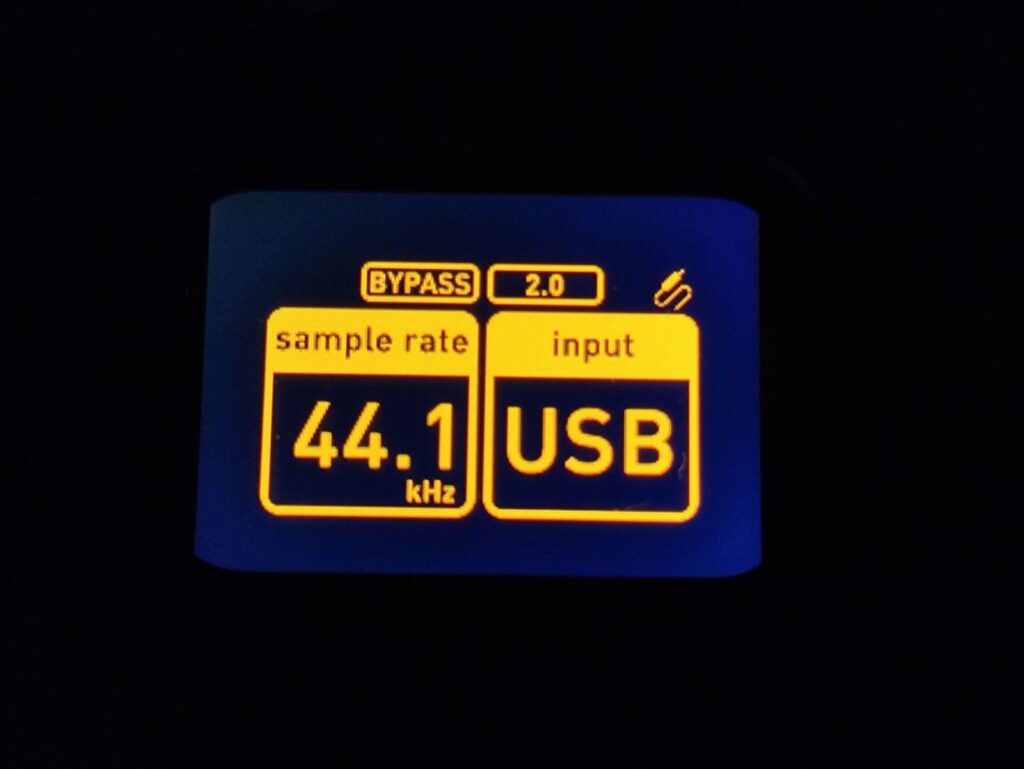
CONTROLS
You can control everything the First K7 does using its physical buttons and knobs. Here’s how you use them:
LEFT WHEEL (VOL/GAIN)
- Adjust volume.
- Short press to switch between high and low gain modes for headphone output
RIGHT WHEEL (CTRL)
- Adjust bass/treble/microphone volume (you select which with a button)
- Short press to mute/unmute the microphone
BUTTONS
From left to right:
1 POWER/UAC
- Short press to power on;
- Long press to power off;
- After powering on, short press to switch between UAC1.0 & UAC2.0 modes (USB Audio Class. UAC1.0 works without a driver from Android and Windows, but not at the highest resolutions)
2 INPUT
- Short press to toggle inputs
3 OUTPUT
- Short press to toggle between headphone and RCA output
4 BYPASS
- Short press to enable/disable tone control (bass/treble adjustments)
5 TONE/MIC
- Short press to toggle the mode of the right control wheel between bass, treble, or microphone level
I find the layout quite intuitive, but a few tweaks could improve usability: It would be more logical to use the right wheel to toggle between its functions and assign the right button to mute the mic (instead of short-pressing the wheel).The screen feels small, though even with the current size, the top-row symbols could be made larger, while the input and sample rate badges could be smaller.That said, in practical use, you’d quickly learn to recognize which symbols light up where.
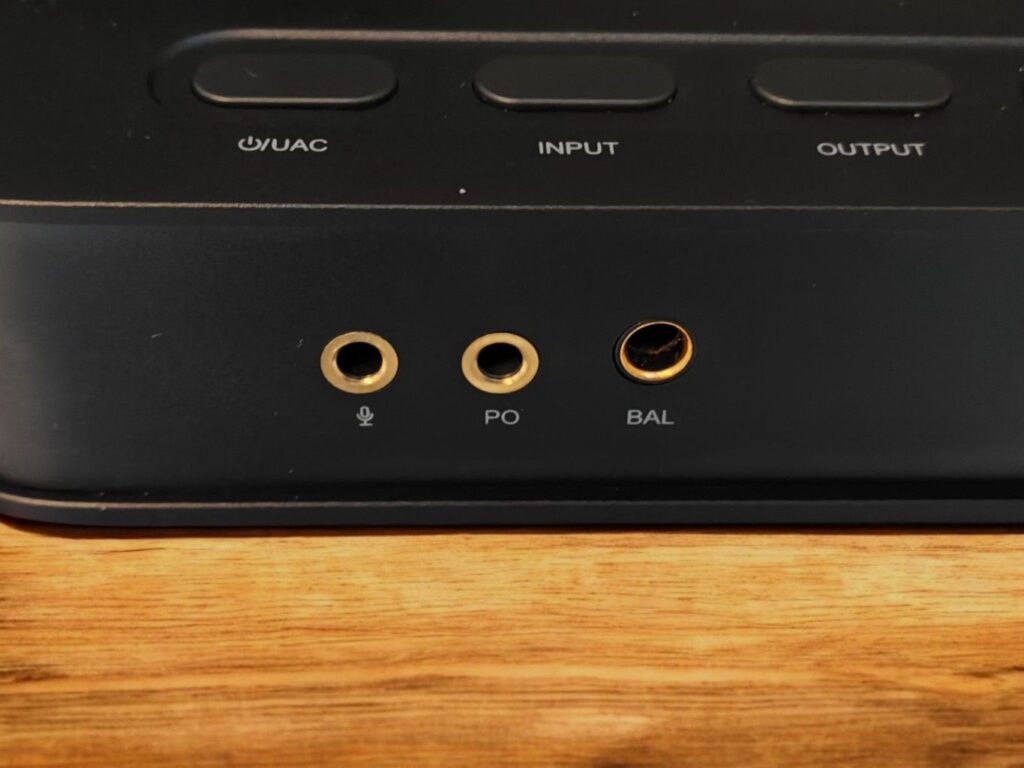
SOME WORDS ABOUT BALANCED HEADPHONE AUDIO
The Fosi K7 is primarily designed for desktop use with a computer. Many potential users, who may not be seasoned headphone enthusiasts, might wonder about the 4.4mm jack and the concept of balanced audio. What’s the point? The short answer is that it’s not essential for great sound—but it has become a trend.
The term “balanced” comes from professional audio. However, in headphone setups, it doesn’t serve the same purpose as in professional environments, where phase inversion and common-mode rejection help eliminate noise.
Instead, balanced headphone systems primarily exist to improve channel separation (eliminating crosstalk) by using variations of dual-mono amplifier designs. Dual-mono also allows for more powerful amplification by doubling the components and running them in parallel. However, an equally powerful single-ended amplifier can be achieved by using higher-powered components or configuring the same components differently—simplify put in series rather than in parallel.
Balanced headphone amplifiers eliminate crosstalk (signal leakage between the left and right channels) by providing separate grounds for each channel. In unbalanced setups, crosstalk occurs because both channels share a common ground. That said, in most cases, it’s a negligible issue—almost like a very slight, unintended crossfeed.
The real driving force behind balanced headphone setups seems to be marketing, industry trends, and the consumer’s demand for more power. “Balanced” has become almost synonymous with higher output power, though the two are not inherently connected. There’s no fundamental need for balanced headphone audio—manufacturers could simply design more powerful unbalanced amps instead. That said, when an amp is built as a balanced design, it will generally perform best in balanced mode—not because balanced is inherently superior, but due to the way the amp is engineered.
Since a balanced headphone amp has separate grounds for the left and right channels, you cannot use a balanced-to-unbalanced cable converter. Doing so would short the separate grounds and could damage the amp—unless it has a protection circuit that shuts it down. However, unbalanced-to-balanced cables are widely used and generally safe.
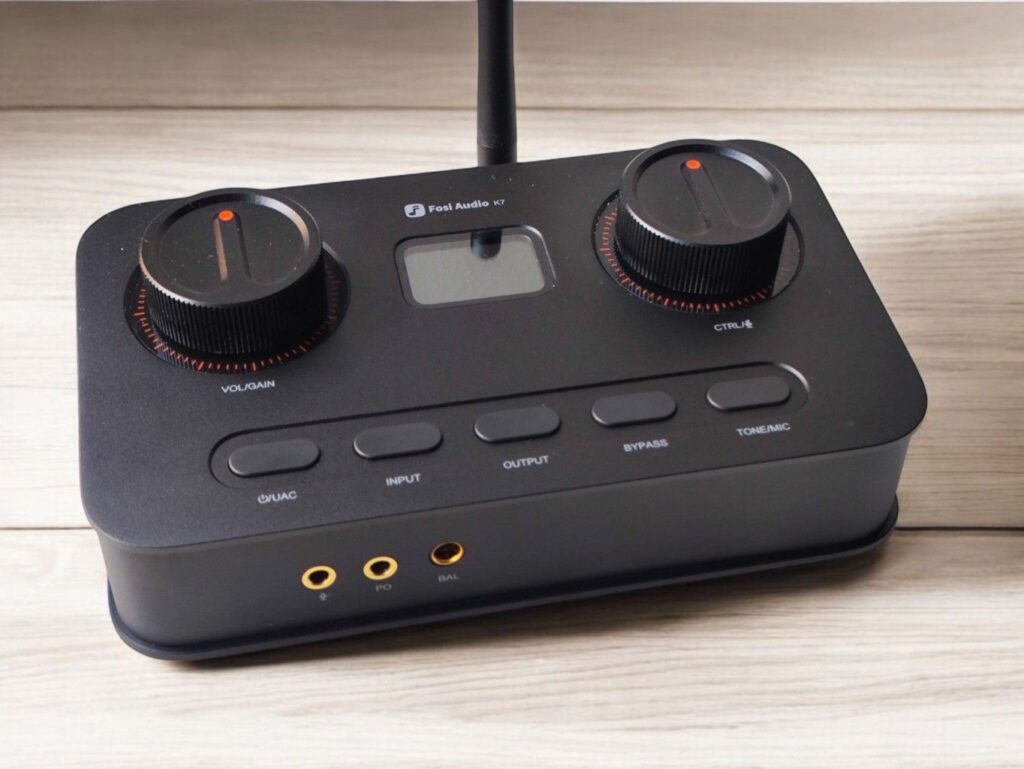
While it’s hard to blame Fosi for jumping on the hype train, I would personally prefer the K7 to feature a powerful unbalanced amplifier design, similar to the Sound Blaster G8. This isn’t a specific critique of the Fosi K7—it’s my general view that all balanced headphone amplifiers could be just as good and powerful in an unbalanced configuration, likely at a lower cost as well.
In my opinion, a good old ¼-inch (6.35 mm) TRS output would be a much better choice. It remains the professional standard, and many gamers turn to studio-grade headphones, which often have a fixed cable with a 6.35 mm jack and are impossible to use with the 4.4mm output because an adapter will short the amp.
While many professional headphones now come with detachable cables, often with a 3.5 mm jack with a screw on a 6.35mm adapter, they typically use 3-pole cables connected on only one side. These headphones can never be used with a 4.4 mm balanced connection (unless you modify it heavily and rewire it).
In summary, I think it would have made much more sense for Fosi to make a more powerful unbalanced headphone amp with a ¼-inch (6.35 mm) output rather than making a balanced design with a 4.4mm output. Unless your headphone actually is supplied with a 4.4mm cable, they might not be compatible even if you replace the cable. Further, good cables aren’t cheap.
That said, I have to add that the unbalanced output of the Fosi K7 sounds excellent, and most headphones won’t actually benefit from the extra power provided by the 4.4mm balanced output.
HEADPHONE LISTENING IMPRESSIONS
I tested the Fosi K7 with several headphones of different types across various price ranges. Below are some brief comments based on my listening experiences.
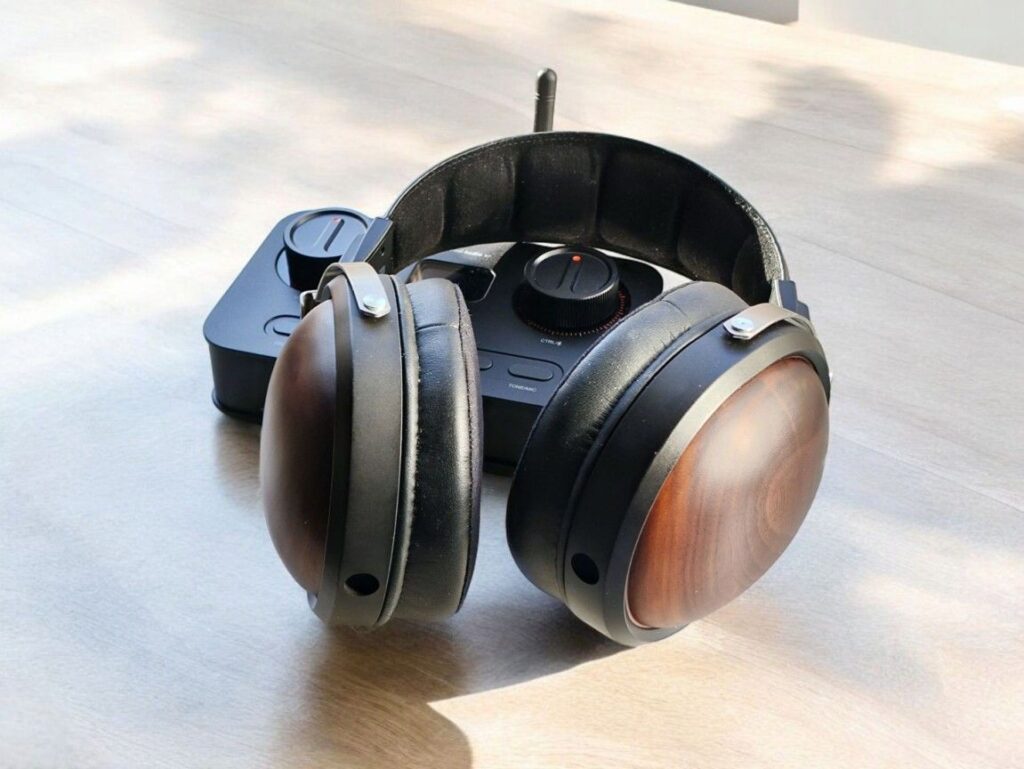
FIIO FT1
- 149 USD
- Dynamic driver closed back
- Impedance: 32 Ohms
- Sensitivity: 98 dB/mW @ 1kHz
- Amazon: FiiO FT1
- AliExpress: FiiO FT1
The FiiO FT1 was last year’s closed-back headphone sensation. I’ve never heard a closed-back headphone this good and well-balanced anywhere near its price point. The build quality is excellent, featuring wood and metal construction. It sounds great with most amps, the K7 is not an exception. Certainly a good combo. Clean, snappy and well-balanced.
MEZE 109 PRO
- 799 USD
- Dynamic driver open back
- Impedance 40 ohm
- Sensitivity: 112dB/1mW
- Amazon: 109 PRO
I’m a big fan of this headphone. It looks as great as it sounds, plus it’s comfortable and lightweight. It sounds excellent on the Fosi K7’s unbalanced output—dynamic, spacious, detailed, and well-balanced. It left me truly impressed.
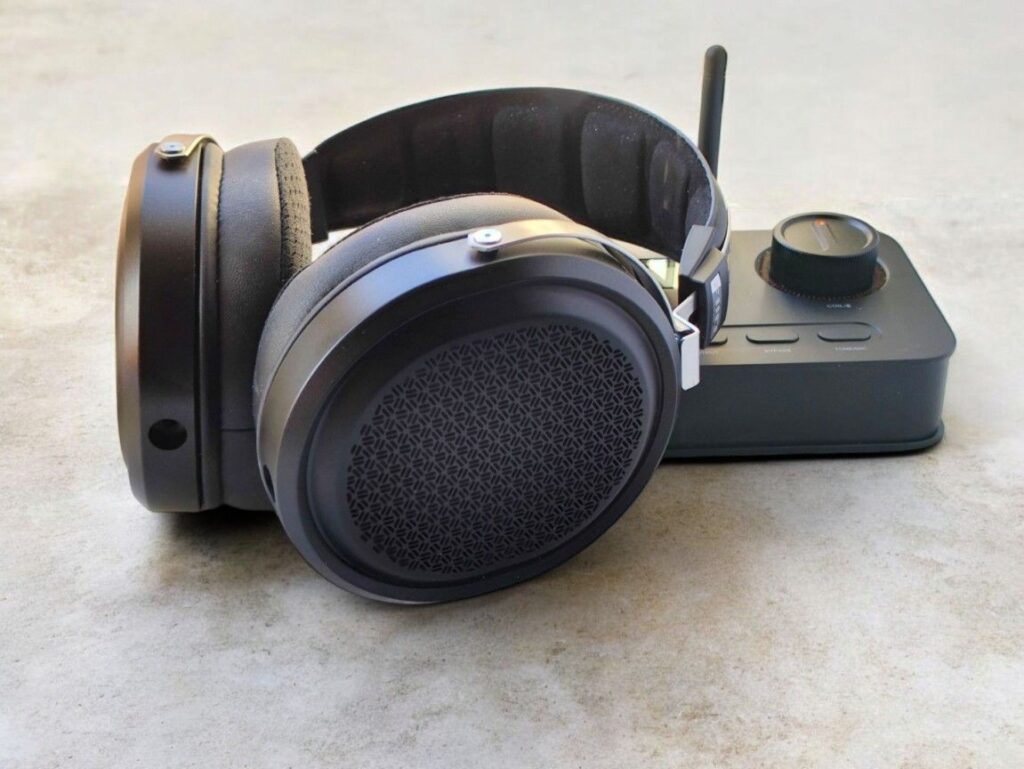
FiiO FT1 PRO
- 199 USD
- Planar magnetic driver open back
- Impedance, 20 ohm
- Sensitivity 112dB/Vrms or 95dB/mW
- Amazon: FiiO FT1 PRO
- AliExpress: FiiO FT1 PRO
The FT1 PRO has been well received as the open-back sibling of the FT1. It features completely different drivers, though it shares the headband mechanisms, pads, and has a similar look.
Running it from both the 3.5mm and 4.4mm outputs on the Fosi K7, I’m really impressed. There’s plenty of dynamic headroom, and the sound is spacious and detailed.
SENNHEISER HD560S
- 179 USD
- Dynamic driver open back
- Impedance: 120 ohm
- Sensitivity: 110 dB (1 kHz / 1 Vrms)
- Amazon: HD560S
This is a reference open-back headphone in its class. It might not look like much, but it’s incredibly lightweight and comfortable. It comes with a lockable 6.35 mm unbalanced cable, so I use an adapter.
From the Fosi K7’s 3.5mm output, it sounds great—very similar to my desktop rig.
AUDIO TECHNICA ATH-R70X
- 349 USD
- Dynamic driver open back
- Impedance 470 ohms
- Sensitivity 98 dB/mW
- Amazon: ATH-R70X
The Audio-Technica ATH-R70X is an excellent-sounding headphone that stands out for two key reasons: it’s extremely lightweight and has a very high impedance. It’s also very neutral sounding.
Despite its 470Ω rating, the R70X sounds quite good from the Fosi K7’s 3.5mm output. I haven’t tested it with the 4.4mm output since I don’t have the right cable, but I suspect it could benefit from more power.
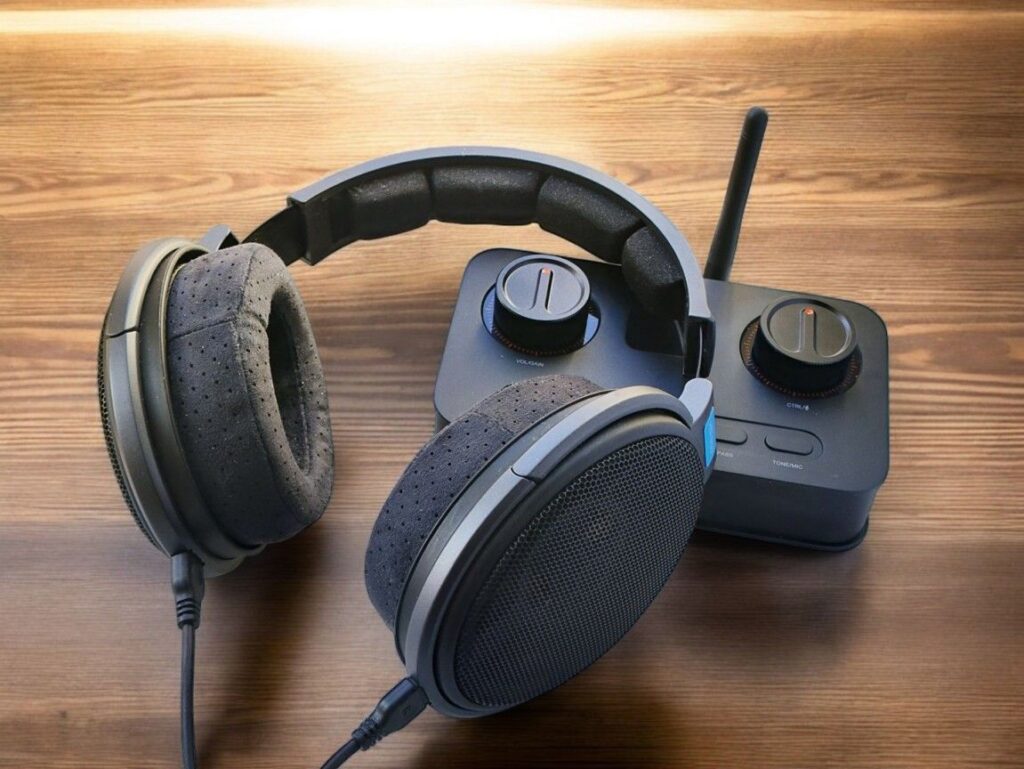
SENNHEISER HD600
- 350 USD
- Dynamic driver open back
- Impedance: 300 ohm
- Sensitivity: 97 db/V
- Amazon: HD600
The HD600 is one of the most well-regarded headphones ever made and is still running strong, cherished for its neutrality and great midrange. With the K7, it sounds excellent—spacious, delicate and snappy. A remarkably good match.
DROP MR. SPEAKERS ETHER CX
- 925 USD
- Planar magnetic driver closed back
- Impedance 23 ohm
- Sensitivity 92 dB/mW
- Amazon: Ether CX
Mr. Speakers have changed their name to Dan Clark Audio by now, but their collaboration with Drop.com, The Ether CX, is one of the few truly good closed-back planar headphones. However, it can sound a bit dry and benefits from a smooth, warmer-sounding amplifier and source to bring out its best qualities.
While the Fosi K7 seemingly has enough power to drive it from the 4.4mm output, I don’t find it to be the best match—it still sounds a bit too dry.
HIFIMAN Edition XS
- 269 USD
- Planar magnetic driver open back
- Impedance 18 ohm
- Sensitivity 92 dB/mW
- Amazon: Edition XS
The XS is the entry-level headphone in Hifiman’s “egg-shaped” planar series, which began with the HE1000 in 2015. The XS stands out for having one of the largest soundstages among headphones, regardless of price.
The Fosi K7 has no issues driving the XS. The sound is clean and neutral, neither bright nor warm, maintaining the neutrality typical of other neutral-sounding amps.
HIFIMAN Ananda Stealth
- 359 USD
- Planar magnetic driver open back
- Impedance 27 ohm
- Sensitivity 102 dB/mW
- Amazon: Ananda Stealth
The Ananda looks very similar to the XS but has a headband strap and slightly different sound signature. Like the XS, the K7 drives it with no issues, delivering a clean and neutral presentation.
HIFIMAN HE400SE
- 109 USD
- Planar magnetic driver open back
- Impedance: 32 Ohms
- Sensitivity: 91 dB
- Amazon: HE400SE
The HE400SE is an excellent-sounding headphone, but it requires plenty of power to perform at its best. It’s the most power-hungry headphone in this roundup.
Using the 4.4mm output on High Gain, I don’t need to go beyond 32 out of the maximum 62 on the volume dial. Using be the 3.5mm output I have to crank up the volume to 42, but it still sounds good. The Fosi K7 provides enough power to make the HE400SE sing, sounding sound snappy and dynamic, especially from the balanced 4.4mm output. .
IEMs (in-ear monitors)
II’m not going deep into IEMs here, but I tried a handful, and all sounded quite good. I had no issues with noise—the K7 was dead silent with every IEM I tested. Two IEMs stood out:
First, the popular $55 Truthear x Crinacle Zero:RED benefits from some extra power to shine, and the K7 drives it wonderfully. It’s a remarkably good combination, making the Zero:RED sound like it costs much more than $55. The soundstage is huge, imaging is excellent, and the frequency response is well-balanced.
- Amazon: ZERO:RED
Second, the Simgot EM6L, which is targeted at gamers, performed remarkably well—for the same reasons mentioned above. It delivers a punchy, clear, and dynamic sound with excellent soundstage and imaging.
- Amazon: Simgot EM6L
- Linsoul: Simgot EM6L
In conclusion, I’m very impressed with the Fosi K7’s performance as both a DAC and a headphone amplifier for both full-size headphones and IEMs. It’s a neutral and powerful-sounding amp, and its both the unbalanced headphone and balanced output performs very well.
The only headphone I didn’t find to sound great was the Ether CX, which is quite picky and benefits from a smoother, warmer amp—so that’s not a fault of the K7. Additionally, while the 470Ω ATH-R70X doesn’t seem to reach its full potential, Fosi specifies that the K7 is designed for headphones between 16Ω and 300Ω, so it’s understandable.
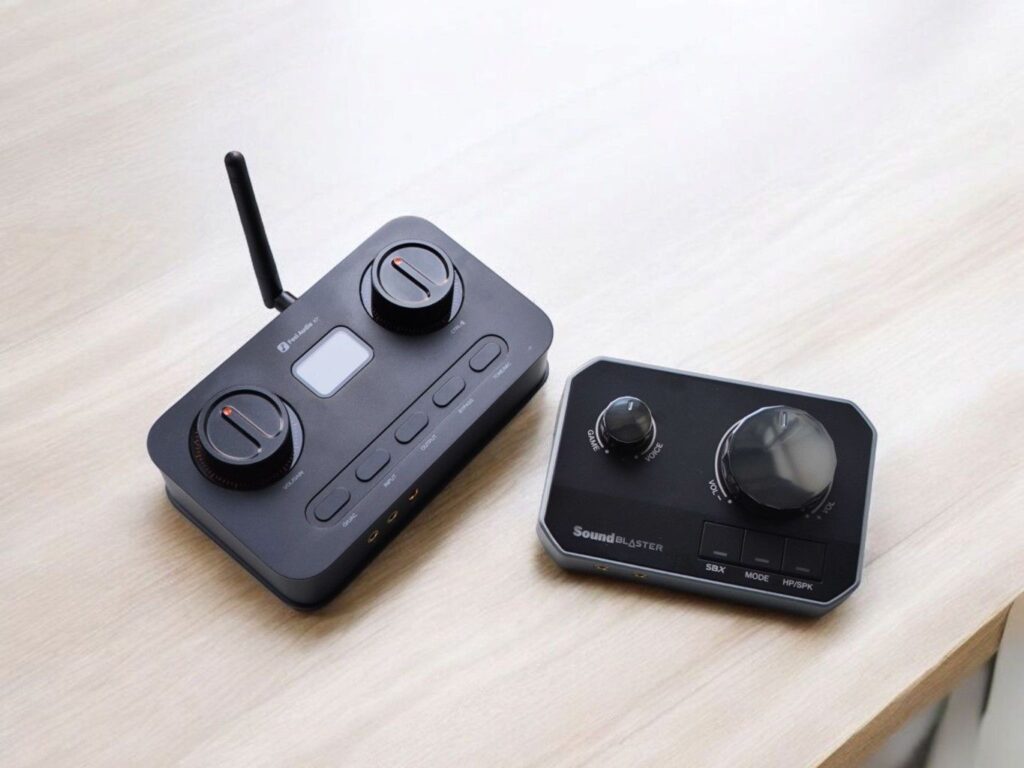
FOSI K7 vs SOUND BLASTER G8
I reviewed the Sound Blaster G8 a few months back and was just as impressed with its sound performance as I am with the Fosi K7. They are similarly priced, with the G8 at $149 and the K7 slightly more. In terms of pure sound quality, I consider them to be equal.
CREATIVE SOUND BLASTER G8 Review: Versatile with Impressive Sound
If I was to recommend one of them over the other, it would come down preferences. Physical features, connectivity, and functionality:
The G8 is much lighter and smaller and doesn’t require a separate power supply—it can run directly from your computer. For semi-portable use, it’s the obvious choice.
For stationary use, however, the K7’s size and weight are an advantage, keeping it more stable on a desk.
When it comes to functionality, I refer to my Sound Blaster G8 review. However, I can say that the G8 is more software-dependent, while the K7 is fully controlled on the unit itself. Important for many would be e.g. that the K7 has a manual mic mute by short pressing the right wheel.
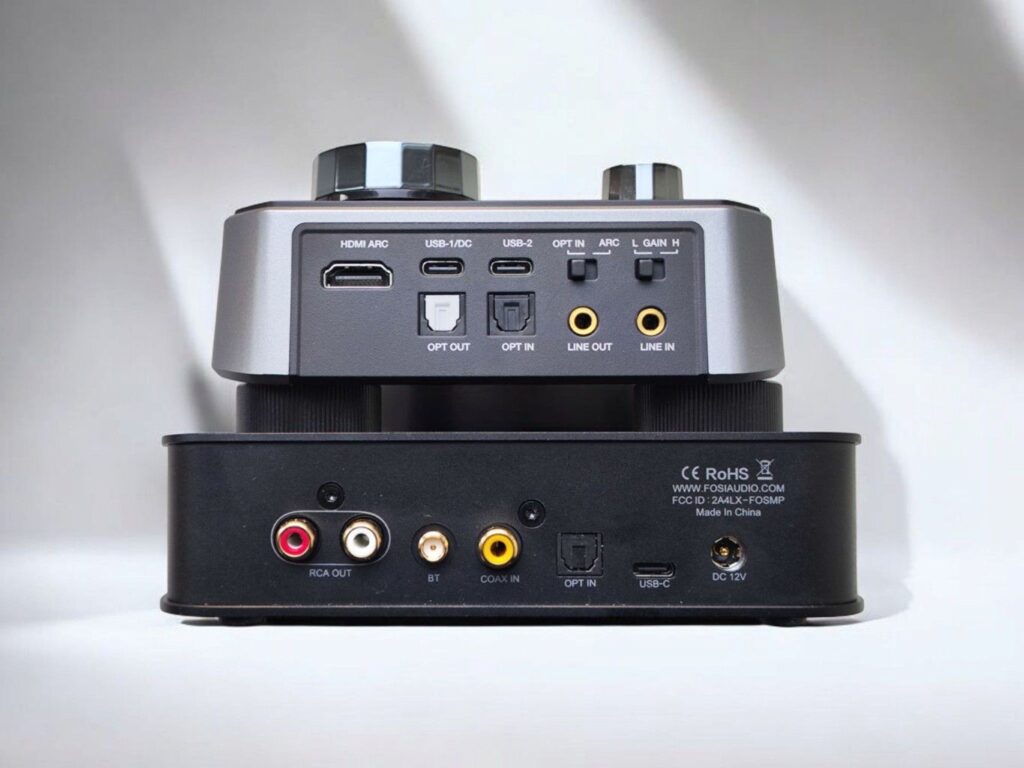
Regarding connectivity, here’s the basics:
INPUTS:
- FOSI K7: Bluetooth, 1 x USB-C, Optical, Coax, Mic.
- SOUND BLASTER G8: 2 x USB-C, Optical, HDMI ARC, Analog, Mic.
OUTPUTS:
- FOSI K7: 3.5mm and 4.4mm for headphone, RCA Preamp.
- SOUND BLASTER G8: 2 x 3.5 mm headphone outputs, RCA Preamp, Optical.
As you can see, the G8 lacks Bluetooth and coaxial inputs, but it offers other connectivity options that the Fosi K7 doesn’t have: analog input, dual USB-C, and HDMI ARC. It also features an optical output, which the K7 lacks.
The G8 can act as a mixing hub for multiple inputs, making it useful for soundtrack and video production. It also includes specialized gaming features, which might be genuinely useful—or just a gimmick, depending on your needs.
The K7, on the other hand, is a more straightforward Bluetooth DAC/amp with a mic input, multiple digital inputs, and great Bluetooth quality and range.
If you want Bluetooth, use the unit mainly for audio playback, as a headphone amp, and/or preamp for speakers, and want to operate it without the computer, the K7 is for you. If you want to be able to operate the unit from your computer, need to do audio mixing, and think the Sound Blaster gaming functions are useful, the G8 is the right choice—and also if you need something semi-portable.
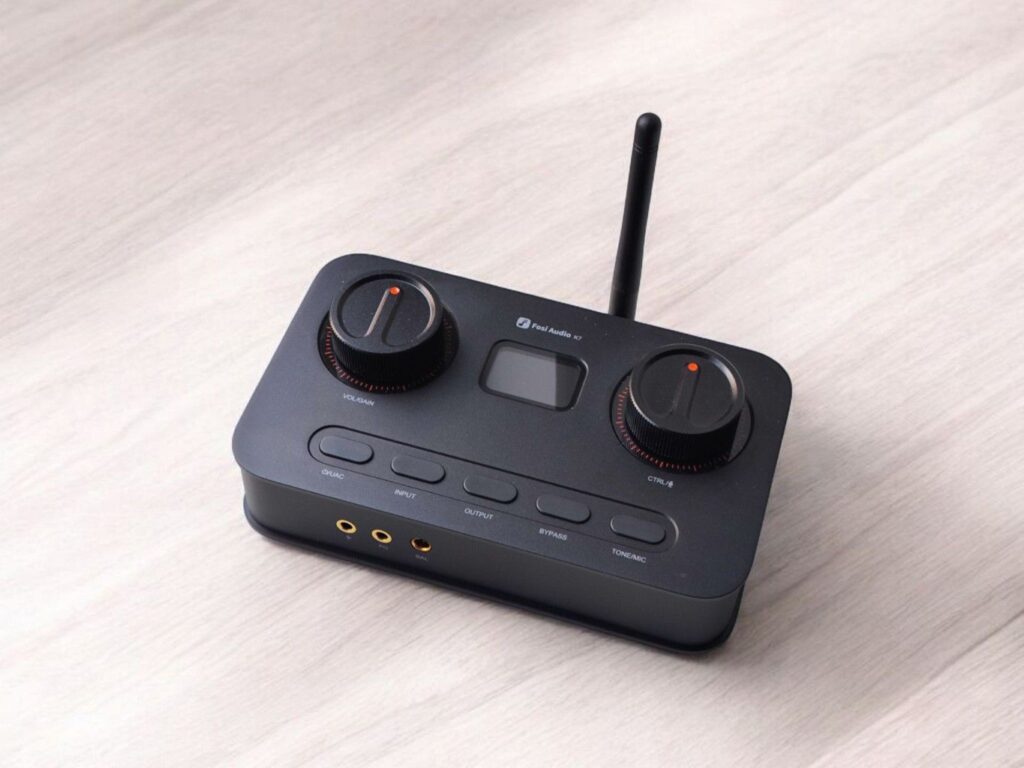
CONCLUSION
The Fosi K7 is a well-built, desktop-focused DAC/Amp/Preamp with Bluetooth. It offers great connectivity, strong functionality, and, most importantly, excellent audio quality.
If it has the features and connections you need, it comes highly recommended.
Thanks for reading. You can support us by purchasing anything using any of our affiliate links.
Any purchase you make on Amazon or Linsoul with any of our affiliate links will give us a small provision at no cost to you.
We only get a provision for items that are not returned, so there’s no incentive for us to recommend something that’s not good.
Linsoul : Headphones, Earbuds, Wireless Earbuds, Desktop DAC/AMP, Portable DAC/AMP, Digital Audio Players,
Amazon: Headphones, IEMs, Headphone Amplifiers, Home Audio or Anything else.
.
EXTENDED SPECIFICATIONS FOSI K7
INPUT SPECIFICATIONS
USB SPECS
- Compatibility: Windows 7,8, 8.1,10,11 (Driver required) Mac OS X, Linux (No driver required)
- XMOS firmware can be updated via the Type-C interface
BLUETOOTH SPECS
- Formats: SBC, AAC, aptX, aptX HD, aptX LL
- Bluetooth Version: 5.0
- Max reach: 13m
MAX SAMPLING RATES
- USB: PCM 384kHz-32bit/DSD256
- Optical: PCM 24bit/192kHz
- Coaxial: PCM 24bit/192kHz
- Bluetooth:PCM 24bit/48kHz
OUTPUT SPECIFICATIONS
Recommended headphone impedance: 16-300Ω
4.4mm Balanced Headphone Output
- 2100mW (32Ω/THD+N<1%)
- SNR 121dB
- THD+N <0.0002%
- Dynamic Range 121dB
- Noise Floor ≤ 6.5μV
- Frequency Response 20Hz-20kHz (±0.1dB)
3.5mm Single-Ended Headphone Output
- 600mW (32Ω/THD+N<1%)
- SNR 122dB
- THD+N 0.0005%
- Dynamic Range 121dB
- Noise Floor ≤2.5μV
- Frequency Response 20Hz-20kHz (±0.1dB)
RCA Output
- Output Level ≥2Vrms
- SNR 20Hz-20kHz (±0.1dB)
- THD+N 0.0005%
- Dynamic Range 121dB
- Noise Floor ≤3μV
- Frequency Response 20Hz-20kHz
INTERNAL CHIPS
- DAC Chip: AKM AK4493SEQ.
- USB Controller: XMOS XU208.
- Bluetooth Chip: Qualcomm QCC30301(Bluetooth 5.0 support)
- Audio: OPA1612 opamp and TPA6120 headphone amplifier.


